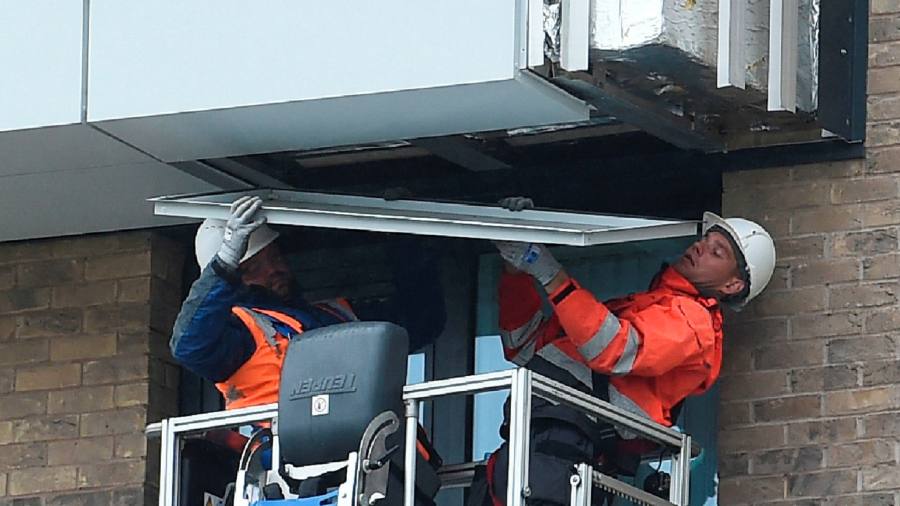[ad_1]
Ministers have pledged a further £3.5bn to address a building safety crisis that has embroiled millions of homeowners in England and announced plans for a new levy on developers.
But thousands of leaseholders will remain liable for repairs through a new state-backed lending scheme — although their costs will be capped.
The government had already pledged £1.6bn last year towards fixing the cladding on buildings above 18 metres, typically six storeys or more, several years after the Grenfell Tower fire killed 72 people.
The fresh injection of £3.5bn from the Treasury will also be granted to freeholders of those tall buildings to make them fireproof, communities and housing secretary Robert Jenrick told MPs on Wednesday.Â
Calling it a “very significant interventionâ€, Jenrick said the government was providing a “clear plan to remove unsafe cladding . . . to inject confidence and certainty back into this part of the housing marketâ€.
He added: “I appreciate the frustration, the worry and at times the despair [homeowners] feel. I share their anger at the errors, the omissions, the false promises and even the outright dishonesty that came before us.â€
The UK’s building safety crisis was triggered by the 2017 Grenfell disaster, which exposed the dangers of cladding and insulation used on the block and thousands others like it. The fire also showed up the deficiencies of the regulations under which developments were signed off as safe.Â
Almost four years on, millions of leaseholders are trapped in flats they are unable to sell because mortgage lenders cannot establish whether they are safe and because funding to fix the properties is unavailable.
Under the government’s announcement freeholders will be expected to pay for fixing the cladding on buildings below 18 metres — usually four to six storeys.
Where this is not possible they will be able to access a new government financing scheme to borrow the money at low interest rates. The leaseholder payments will be capped at a maximum of £50 a month — equivalent to £600 a year.Â
According to the trade publication Inside Housing, there are more than 100,000 blocks between 11-18m, compared with just over 10,000 above 18m.
Jenrick said there would be a new levy on housebuilders to ensure the construction industry “plays its part†in sorting out the problem. But he said the details of the new tax — to start in 2022 — had not been finalised and would be worked out in the coming weeks.Â
But Thangam Debbonaire, Labour’s shadow housing minister, said: “These proposals will still leave too many people suffering and facing loans instead of giving them justice.â€
The inquiry into the fire is probing how much the companies that provided cladding for the tower knew about its potential flammability.Â
Ministers and the construction industry, meanwhile, have been wrangling over who should pay to fix potentially unsafe blocks.Â
The £3.5bn package announced on Wednesday is short of the highest estimates for the costs of remediation, which some experts have placed at £15bn.Â
Despite repeated assurances that leaseholders would not be hit with “unaffordable costsâ€, Wednesday’s announcement left millions facing “crippling bills to make our homes safe,†said Jenni Garratt, speaking on behalf of the End Our Cladding Scandal campaign.Â
Almost two-thirds of leaseholders caught up in the crisis are facing bills of more than £30,000 to cover repair work, and one in six are considering declaring bankruptcy, according to a survey of 1,342 leaseholders conducted by Inside Housing.
A loan to leaseholders would spread that cost, but Jenrick made no mention of compensating homeowners who are being forced to cover the costs of temporary safety measures, which in many cases have run to tens of thousands of pounds.Â
[ad_2]
Source link






